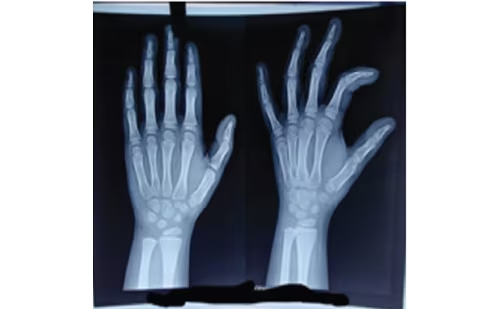It is more difficult to implement this goal in the pediatric population, especially due to the increased risk for hypoglycemia in preschool children, as well as fluctuations in insulin requirements caused by exercise, variable carbohydrate intake, and physiological changes due to puberty and age. The possible reduction of hypoglycemia is especially important in children as recurrent episodes might increase the risk of cognitive impairment.
It is more difficult to implement this goal in the pediatric population, especially due to the increased risk for hypoglycemia in preschool children, as well as fluctuations in insulin requirements caused by exercise, variable carbohydrate intake, and physiological changes due to puberty and age. The possible reduction of hypoglycemia is especially important in children as recurrent episodes might increase the risk of cognitive impairment. Results from the Hvidore Study Group on Childhood Diabetes demonstrated that management strategies are inadequate for the majority of children and adolescents with type 1 diabetes, with most failing to achieve glycemic targets.
Although continuous subcutaneous insulin infusion delivered by an insulin pump is gaining in popularity as a reliable method for achieving optimal glycemic control, the basis of treatment for the pediatric population is still insulin replacement by injection. Choice of insulin regimens for children and adolescents remains a matter of debate, with some diabetes centres recommending multiple-injection therapy, especially during adolescence, while others suggest conventional twice-daily injections. In the Hvidore Study, there was no difference in glycemic control among adolescents receiving two, three, or more daily insulin injections. Indeed, despite the range of insulin regimes available, few individuals achieved near-normal glycemia.
Pre-mixed insulins (fixed-ratio mixtures of short-acting and intermediate-acting insulins) offer a treatment option, especially for young children on twice-daily regimens. Data on the relationship between insulin treatment regimen and metabolic control are conflicting: while some studies show improvements in metabolic control in adolescents with increasing injection frequency, other studies do not confirm such a relationship. The aim of this article is to review advantages and caveats in the use of the premixed insulin analog biphasic insulin aspart 30 (BIAsp 30) in children and teenagers who have diabetes.
Insulin Analogs
Insulin analogs were developed through genetic engineering of the native insulin molecule in an attempt to overcome some of the limitations faced when using regular human insulin (HI) for replacement.
Compared with regular HI, the rapid-acting insulin analogs—insulin aspart and insulin lispro—more closely resemble endogenous insulin secretion by their faster onset and shorter duration of action. This results in less postprandial hyperglycemia, as well as eliminating the need for injection 20–30 minutes before meals as is required with HI. The speed of absorption means that these insulins are effective even when given postprandially. This has clear advantages in young children, with their often unpredictable appetites, and allows greater flexibility of mealtimes, thereby improving convenience. The rapid-acting analogs given in the evening also decrease the risk of nocturnal hypoglycemia, a distinct advantage in young children because of the high incidence of asymptomatic nocturnal hypoglycemia.
Pre-mixed insulin analogs, such as BIAsp 30 and biphasic insulin lispro (Mix 25) contain rapid-acting insulin analogs (30% or 25%, respectively) in association with a protaminated portion of the insulin analog (70% or 75%, respectively), which is intermediate acting, thereby providing basal insulin coverage for control of fasting blood glucose levels. One of the main advantages of the pre-mixed formulations is that fewer daily injections are required to obtain reasonably adequate glycemic control. In clinical trials in adults, BIAsp 30 and Mix 25 provide more-effective postprandial control of blood glucose than pre-mixed HI 30, with comparable long-term glycemic control (evaluated by changes in hemoglobin A1c (HbA1c)).
Clinical Studies with BIAsp 30 in Children and Adolescents
A multinational, randomized, open-label, parallelgroup 16-week trial treatment showed that BIAsp 30 was associated with similar glycemic control and a similar incidence of hypoglycemic episodes as HI.The study involved 167 adolescents (aged 10–17 years) with type 1 diabetes for at least 18 months. Treatment comprised three or more daily insulin injections. Subjects in the BIAsp 30 group received BIAsp 30 immediately before all three main meals (see Figure 1). Subjects randomized to HI received premixed HI 30 (30% soluble HI with 70% long-acting Neutral Protamine Hagedorn (NPH) insulin) before breakfast and soluble HI before lunch and dinner. Both groups were allowed additional insulin after snacks and NPH insulin at bedtime.The primary outcome measure was glycemic control evaluated by postprandial glucose levels, HbA1c, and frequency of hypoglycemia.Total daily insulin dose at end of study was 1.20 units per kilogram of body weight (U/kg) for BIAsp arm and 1.15U/kg for HI arm. No statistically significant differences in blood glucose control were observed between treatment groups. HbA1c levels were comparable between groups at baseline and decreased by approximately 0.2% from baseline (p= 0.62) on either treatment (see Figure 2). Consistent with these findings, lack of a significant difference in glycemic control between pre-mixed insulins and variable mixtures was reported. Nevertheless, the average HbA1c in both treatment groups at study end was quite high (BIAsp 30 9.4%; HI 9.3%). These values illustrate that, compared with adults, optimization of blood glucose control is especially difficult in adolescents.
Table 1 shows the average postprandial blood glucose increment in both treatment groups during treatment. Both treatments were associated with an overall reduction of the average prandial blood glucose increase by one millimole per litre (18 milligrams per decilitre) from baseline. In adults, BIAsp 30 was shown to reduce postprandial blood glucose excursions over four hours by 23% more than biphasic HI (BHI) 30. Parents of very young children with diabetes often find it difficult to predict the food intake at mealtimes. Overestimating the calorific intake results in excessive insulin dose with resultant postprandial hypoglycemia, while underestimation results in postprandial hyperglycemia.
The advantage of the rapid-acting insulin analogs is the potential for postprandial administration, which has been shown to have an improved metabolic profile when compared to that of HI given preprandially. In both treatment groups there was a minor increase in body mass index (BMI) during the 16-week treatment period. The standard error of the mean increase was, however, significantly greater in the HI group than in the BIAsp 30 group (BIAsp 30, +0.16kg (0.10); HI, +0.56kg (0.11); p=0.005). Intensive insulin regimens are commonly reported to be associated with increased BMI, which is generally assumed to be due to increased snacking.Weight gain is a particularly important factor in the young adolescent population, where there is likely to be a fear of weight gain during intensification of insulin treatment or increases in insulin dose during puberty.Hypoglycemia is a significant impediment to intensified insulin treatment for both parents and children. Fear of hypoglycemia, especially nocturnal episodes that are often asymptomatic, may compromise optimal glycemic control. The rapidacting insulin analogs have a theoretical benefit in reducing such events. A decrease in night-time hypoglycemia has been reported with rapid-acting insulin analogs in children and adolescents, as well as in adults. In a recent trial, rates of hypoglycemia (major, minor and symptoms-only) episodes were similar between treatment groups (see Table 2). Risk of nocturnal episodes was 25% lower with BIAsp 30 than with HI (relative risk, BIAsp 30/HI, 0.75 (95% confidence interval, 0.43; 1.31), p = 0.313).
In a retrospective study of 24 children (age (mean± standard deviation (SD))) (11.1±2.8 years) treated with BIAsp 30 and 50 children (8.3±3.9 years) treated with BHI, HbA1c during the first year of treatment was lower in BIAsp-30-treated subjects (8.1±1.3% versus 9.1±1.2%). BMI standard-deviation score (SDS) (mean±SD) was also lower in children treated with BIAsp 30 than those treated with BHI 30 (0.58±1.1 versus 1.0±1.2) despite slightly higher insulin dose (0.80±0.48 versus 0.78±0.31 U/kg per day).The lower BMI SDS may reflect a reduced need for snacking with BIAsp 30 compared with BHI 30.
Clinical Experience with BIAsp 30 in Children and Adolescents
Basal-bolus regimens are becoming increasingly more common in pediatric diabetes clinics and are often used as starting regimens in children across all age ranges.The use of insulin analogs is well suited to this type of regimen, allowing more physiological insulin replacement. However, not all children and adolescents are ready to take four or more daily insulin injections. In the Hvidore Study, patients using individual combinations of short- and intermediate-acting insulins had lower HbA1c values. However, after a three-year follow-up, many adolescents with type 1 diabetes still had unsatisfactory metabolic control, irrespective of treatment regimen. Indeed, switching from two to multiple daily injections did not improve blood glucose control.Premixed insulins are useful for reducing the number of injections when adherence to the regimen is a problem. A 1993 short-term study reported that switching to pre-mixed insulin in children aged seven to 16 years had no detrimental effect on glycemic control. In a multinational, cross-sectional study involving 2,873 children and adolescents, pre-mixed insulin was used in 37% of children on twice- or threetimes daily insulin. No significant differences were observed in age-specific mean HbA1c concentrations between children on twice-daily pre-mixed insulin and children on twice-daily short- and intermediate-acting insulin in the prepubertal years (see Figure 3).However, in adolescents on twice-daily premixed insulin HbA1c, levels were higher than those on short- and intermediate-acting insulins.
In a recent questionnaire survey of pediatric prescribing practices in pediatric diabetes clinics in Europe, 27% (approximately 346 children out of a total of 1,275) were treated with twice-daily pre-mixed insulins (most commonly in the age group two to 10 years). Of these, 62% of children were using pre-mixed insulin analogs. Use of pre-mixed insulin analogs in a three-times-daily treatment regimen was also a common treatment option, especially in children younger than 11 years (up to 30% of surveyed children) as it provides good glycemic control, low risk of hypoglycemia and prepares younger children for transfer to basal-bolus therapy as they reach adolescence.
A further treatment option, used by approximately 10–15% (40 out of 1,275) of surveyed children was one injection of pre-mixed insulin analog at breakfast, with rapid-acting insulin analog at dinner and long-acting insulin analog at bedtime. This option, popular among young school-age children (5–10 years) eliminates the requirement for a lunchtime insulin injection, often difficult within the school day.
Conclusions
In conclusion, multiple daily injections of BIAsp 30 provide similar blood glucose control and a similar rate of hypoglycemia episodes as a pre-mixed HI regimen. Use of the pre-mixed insulin analog enables the insulin dose to be given immediately before (or 15 minutes after initiation of) meals without having to wait for 30 minutes, as is recommended with HI. This is possibly easier to fit in with normal daily life and may also reduce the need for snacking. Although pre-mixed insulins reduce potential errors in drawing-up insulin, they lack the flexibility offered by separate adjustments of rapid- and long-acting insulin; therefore, multiple daily injections are usually required for optimal control, at least in adolescents.







